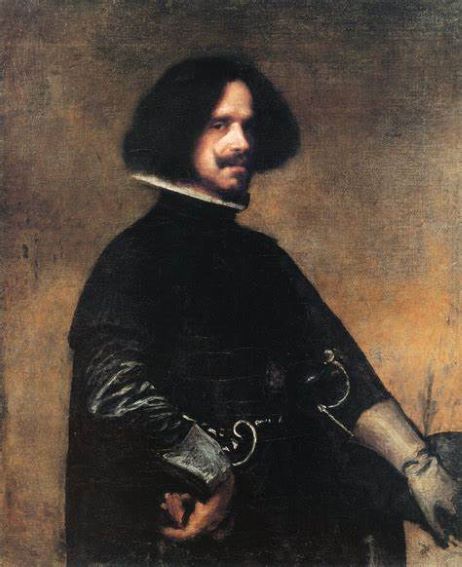
With Velasquez we are dealing with the third of the great triumvirate of Baroque masters, along with Rembrandt and Rubens. Velazquez has also been called the greatest painter of all time – painter, not artist – for his brilliance in the application of paint. Though all the baroque masters could handle the paint with supreme confidence, Velasquez’ courtly subjects allowed him the greatest scope for his virtuosity. Hus paint application is astonishing in its combination of freedom and descriptive power. He sets a standard for masterful brushwork which is unexcelled.
Velasquez painted may portraits of the young princess of the Spanish royal house, the Infanta Margherita, in a succession of ages and unbelievably opulent clothing. I am showing one example here, together with a close-up that shows the brushwork more clearly. Luckily for the princess, most of the painting of the dress would have taken place when she was not in it. The use of pure brushwork to describe the materials and textures of cloth and jewelry is stunning. Velazquez also shows the features of the inbred Hapsburg face without an attempt to disguise them.
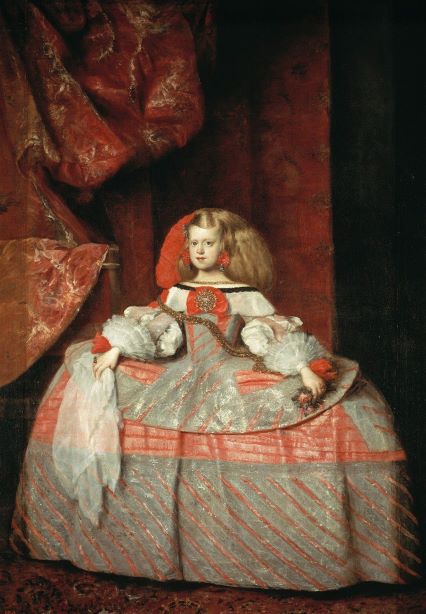
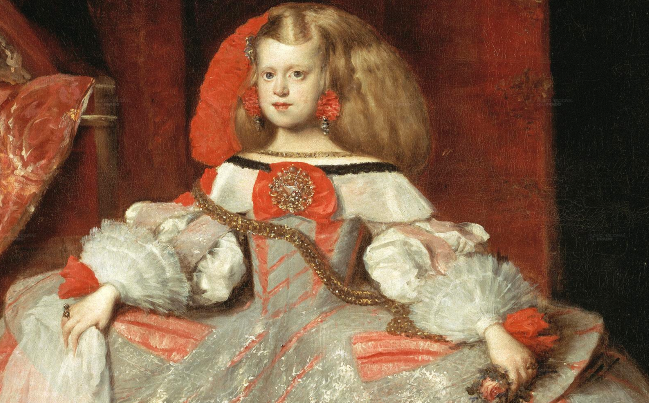
As we saw with Rembrandt, Velasquez was strongly influenced by Caravaggio in his earlier works. In “Los Borrachos (The Drunkards)” Velasquez show the god Bacchus as an ordinary mortal, surrounded by lower class Spaniards from the streets. Also, like Caravaggio, he makes direct eye contact with the viewer with a couple of the drinkers, inviting him to join in the revelry.
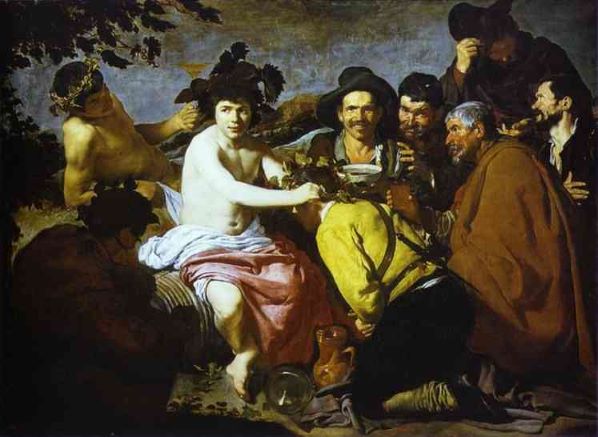
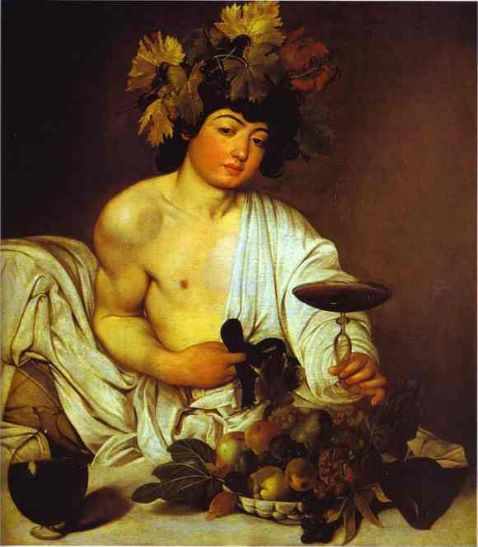
Another work in the Caravaggio tradition of common subjects is the “Water Carrier”, one of my favorites. The drama of Caravaggio is gone, replaced by a simple presentation of ordinary figures doing what they do. I love the rich earth tones of the palette, and the lovingly described texture of the leather jerkin and jugs. Velasquez wizardry with the brush extends well beyond aristocratic finery.
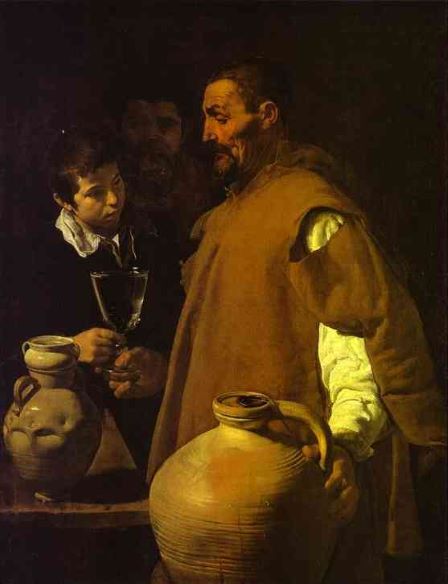
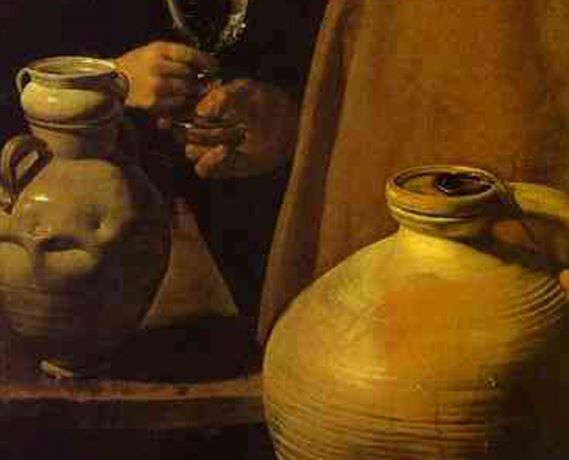
I want to show a portrait, this time NOT of the royal family, the “portrait of Juan de Parejas”, a moor and a man of substance. I will compare it to one of the many portraits of Phillip IV of Spain. The moors, who had conquered southern Spain some centuries before, still enjoyed a sense of equality and respect among the Spaniards for a while longer. He is portrayed with respect and shown with integrity and pride. There is an integrity in Velazquez’ portrait of the king as well, which does not allow him to flatter the subject. The outfit is no doubt splendid, but the face and body are pompous and weak. By contrast, Juan de Parejas come across as a man of character, integrity and self-assuredness.
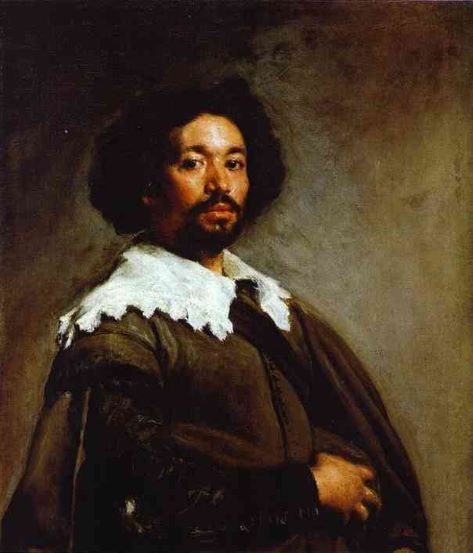
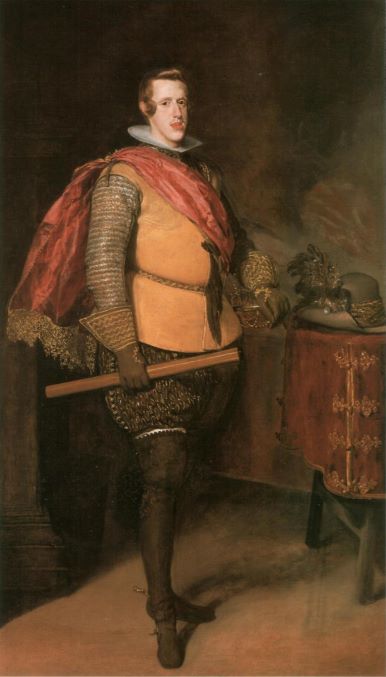
I will show one of Velasquez’ best known works, “Las Meninas” (the maids in waiting) which is typically Baroque in its subtlety and interaction with the viewer. Though it purports to be a depiction of the infanta Margherita dropping in on a portrait sitting, it soon reveals itself to be much more. The painter (Velasquez himself) is staring intently at the viewer, who thus becomes the subject of the portrait. This is then explained by the appearance of the royal couple in the mirror at the back. You, the viewer, are thus the king and queen of Spain.

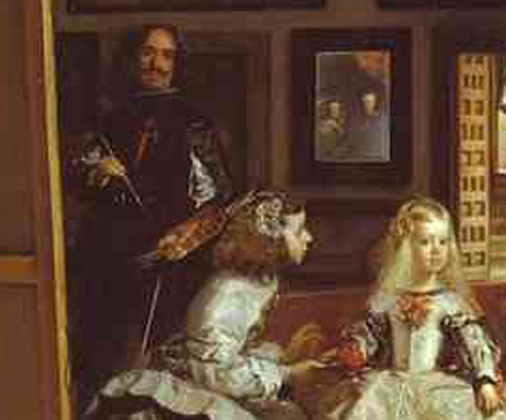
Velasquez is too focused on the surface of things to be considered as great an artist as Rembrandt, but he was an unparalleled paint slinger!
I’ve been asked to remember my memories of the early MAC. To tell the truth, I don’t have much. I remember lots of hot, stuffy meetings at the House of Art and lots of discussions with Grace